Uganda cultural diversity
Ugandan culture is reflected in the rural lifestyle of local tribes and villages. They are rich in traditional etiquettes like unique celebrations and dances, eating styles, costumes and so on.
1. Demographic and religion
Uganda’s population ranks 31st in the most populated countries in the world. There are not so many large cities and urban areas in Uganda since over 80% of the population lives in rural areas.
Language and people
Uganda is a multilingual country with more than 40 living languages spoken, which can be grouped into three main branches: Bantu, Central Sudan, and Nilotic. Apart from English which is the most common language in Uganda, Swahili (a Bantu language) and Luganda are also viewed as second official national languages.
The majority of Ugandan people are concentrated on the central, southern, and western regions, they are Bantu-speaking people. Non-Bantu speakers settle their lives in the Northern and Eastern regions. Buganda makes up the largest ethnic group in Uganda, though they represent only 16.7% of the population.
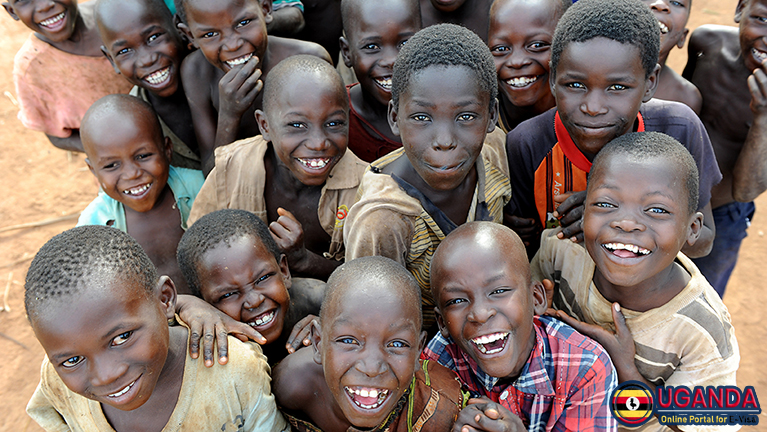
Religion
Christians constitute up to 85% of the Ugandan population and become the largest religious community in Uganda while about 12% of the population are Muslims. Therefore, many holidays are held regarding the traditions of these two religions. Approximately 1.6% of the population practices either indigenous religions, Buddhism, the Baha’i Faith, or Hinduism. Another 2% of citizens are identified as being either atheist or agnostic.
2. Cultural identities
Many regions in Uganda have kingdoms such as Buganda, Busoga, Bunyoro, and Toro. The current kingdom is Buganda with the reigning King Ronald Mutebi II. Since Ugandan people mostly live in rural areas, so there forms many tributes and each tribute contribute their traditional customs to the national culture.
Central Uganda
This is the region where Bantu speakers settle down their lives. Traditionally, a man here can marry five wives or more provided that he could carter for them. Moreover, Buganda is also renowned for its unique ceremonial occasions including commemoration, inauguration and other events relating to spiritual norms. Some can be taken as examples are “The last funeral rite” (also known in local language as Okwabya Olumbe) or “The initiation of twins” (Okwalula Abalongo),…
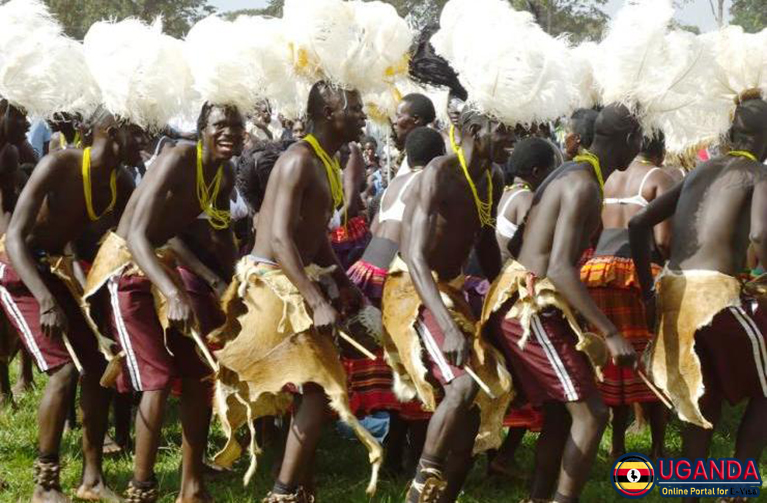
The picture above shows how people celebrate the life of deceased people and marks the end of the mourning period after a family lost their loved family member. It is believed that as soon as the last funeral rites are performed then the family gets back to normal life. A family is not allowed to perform any other ceremonies (party, wedding,...) in a home before the last funeral rite is held.
Northern Uganda
The region depends on agriculture as their economic activity with millet and sorghum serving as staple food. Traditionally, about the marriage life, either the bride or groom follows the decision of the head of a lineage after some discussions. About ceremonies, you may find your interest once you visit the villages and take some dances with local people, known as the Tapeth, a small ethnic group living with the Karamojong. The traditional dance is called “Naleyo” that is performed annually after the Harvest season.
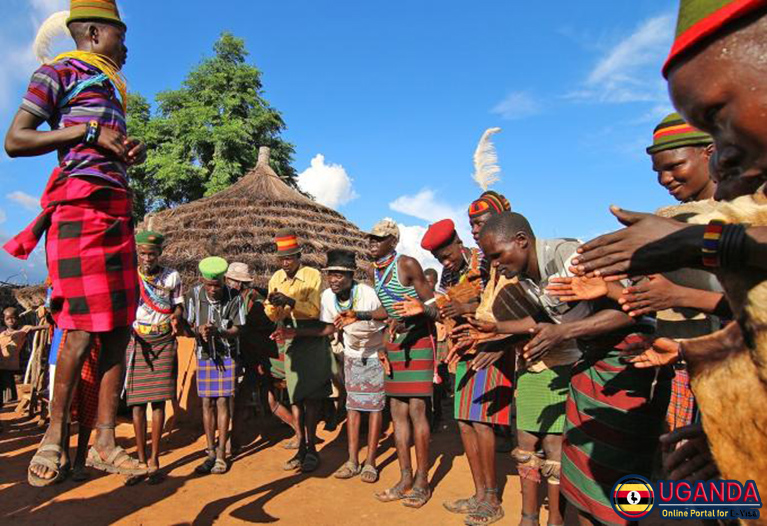
It is celebrated to cheer the good harvest that has passed. On that occasion, young women have their rights to choose their partner to dance with. Men in the village have to prove themselves as they are clever and strong enough if they want to gain attention from the women who they intend to marry. So it is hardly found a couple dancing at the event since the women can pick any partners they like. The tool like sticks are utilized on that day as a part of the performance. During the ceremony, people can party together and get drunk. It brings happiness for everyone in the tribe.
Western Uganda
There exists a sub-kingdom in Western Uganda, just like the central region, which is also very rich in the tribal culture. Ankole is the most populated tribe in Western Uganda. Theoretically, the King owned all cattle and women, so father who have daughters are so anxious to call attention from the King to their daughters because the King will give them generous wedding gifts.
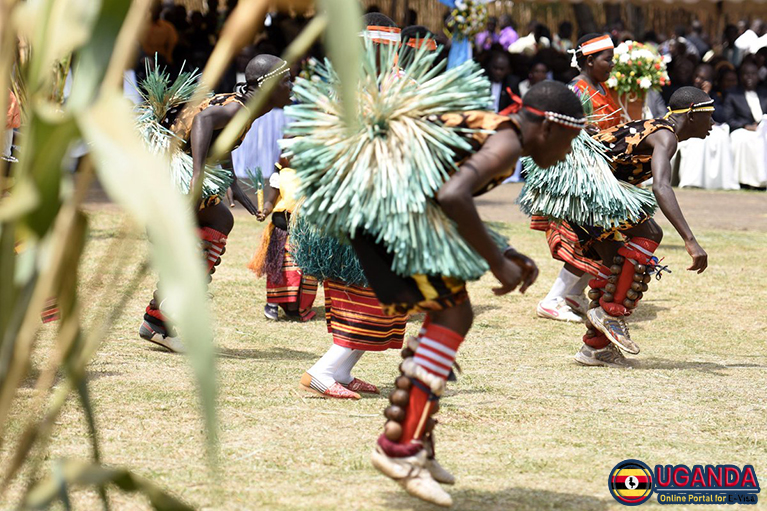
“Entogoro dance” is a traditional culture and an integral part of their spiritual life. When dancing, the boys tie on their legs to make different rhythms.
3. Costume and cuisine
Costume
The men in Uganda wear a kanzu which is a white or cream-colored robe that reaches the ground. It is referred to as tunics.
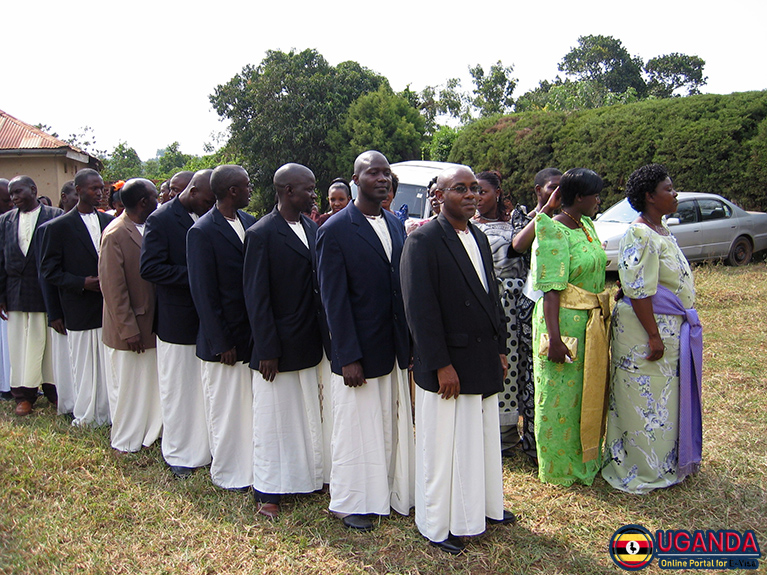
The women wear a dress called a “gomesi” with a sash tied around their waists, and the “gomesis” on their shoulders which exaggerates their shoulders (much like shoulder pads). The women who come from the west drape a long cloth around their waists called a “suuka”. The women in the southwest wear long, loose skirts and tie matching cloths across their shoulders. They also wear long flowing dresses to the floor called a “busuti” which was introduced by the 19th-century missionaries.
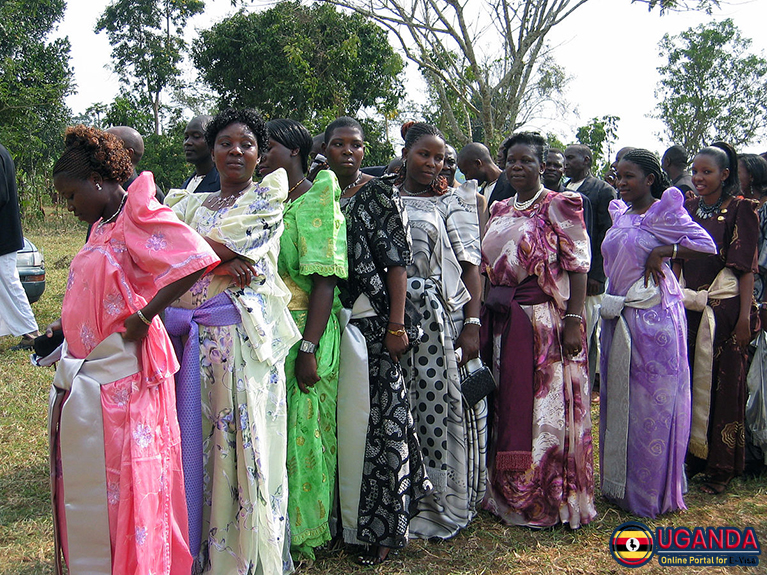
Cuisine
Ugandan cuisine has been influenced a lot from India, Arab and British cuisine. The food is not typically spicy but based on the season. Because rice is expensive and not typically consumed, you cannot expect to eat much rice if visiting Uganda.
More importantly, when a meal is ready, all the family members usually wash their hands and sit on floor mats as a traditional norm. Visitors and neighbors who drop in are expected to join the family during the mealtime. Normally, a short prayer is said before the family starts eating. Leaning on the left hand or stretching one’s legs at a meal is a sign of disrespect. When the meal is finished, everyone, in turn, gives a compliment to the mother.
CONTACT US
For any assistance, please call 24h professional support center below.
- Hotline:
![]() United States: +1 818 930 5979
United States: +1 818 930 5979
![]() United Kingdom: +44 191 730 0179
United Kingdom: +44 191 730 0179





